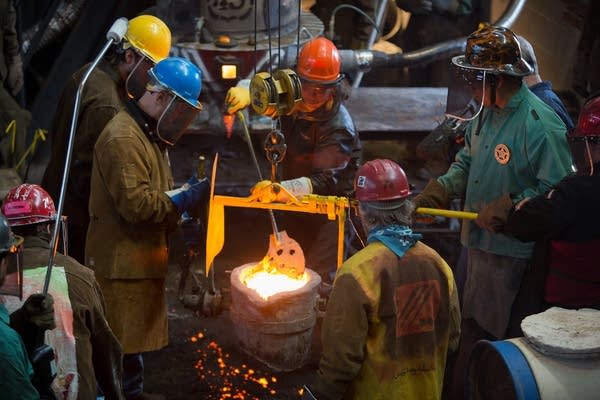Fire and art: Forging strong ties at the U of M's iron pour

The artists skim slag, containing impurities or other debris, off the surface of the hot iron before pouring it into molds Friday, Apr. 25, 2014 at the Regis Center for Art at the University of Minnesota.
Jennifer Simonson/MPR News
Go Deeper.
Create an account or log in to save stories.
Like this?
Thanks for liking this story! We have added it to a list of your favorite stories.


